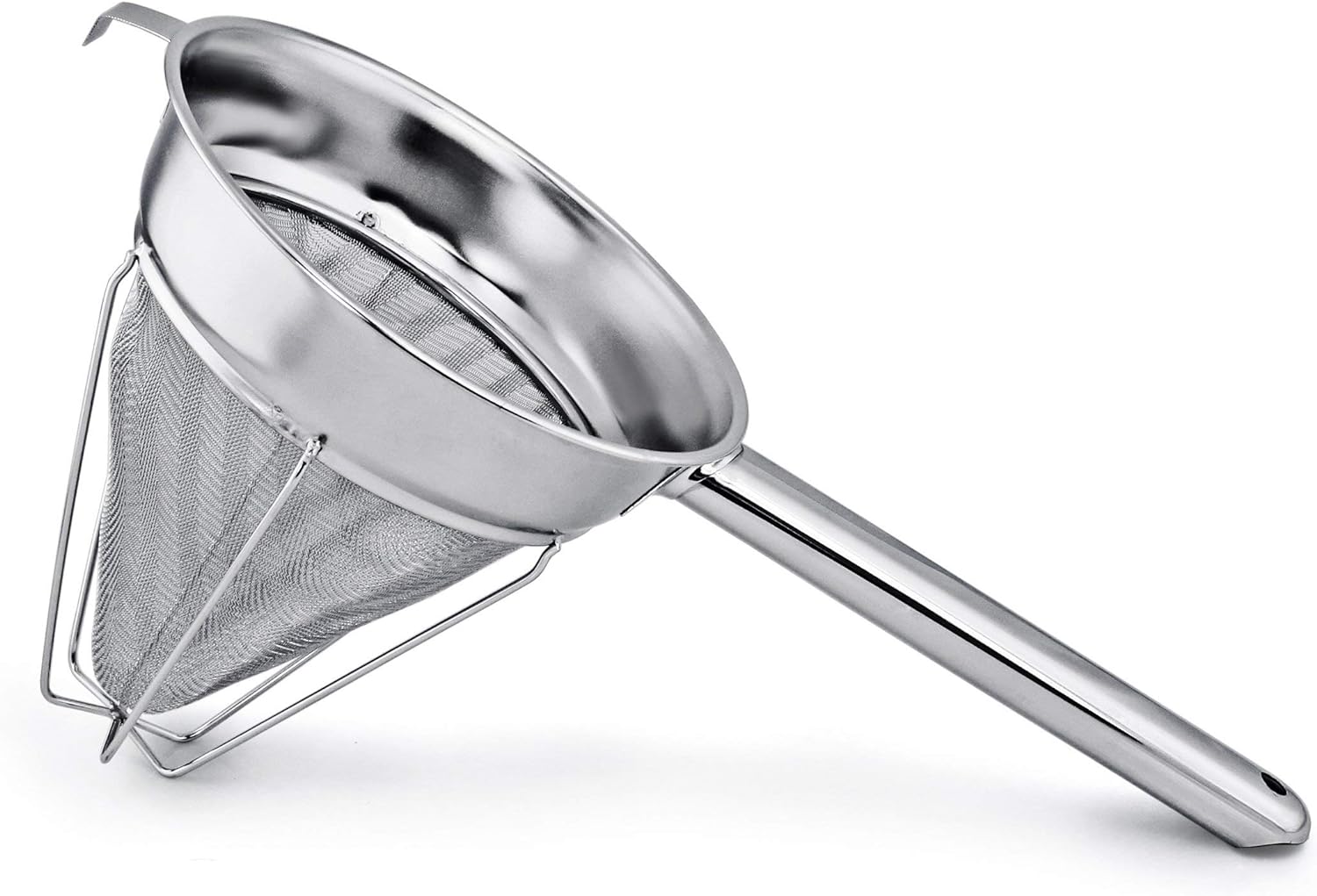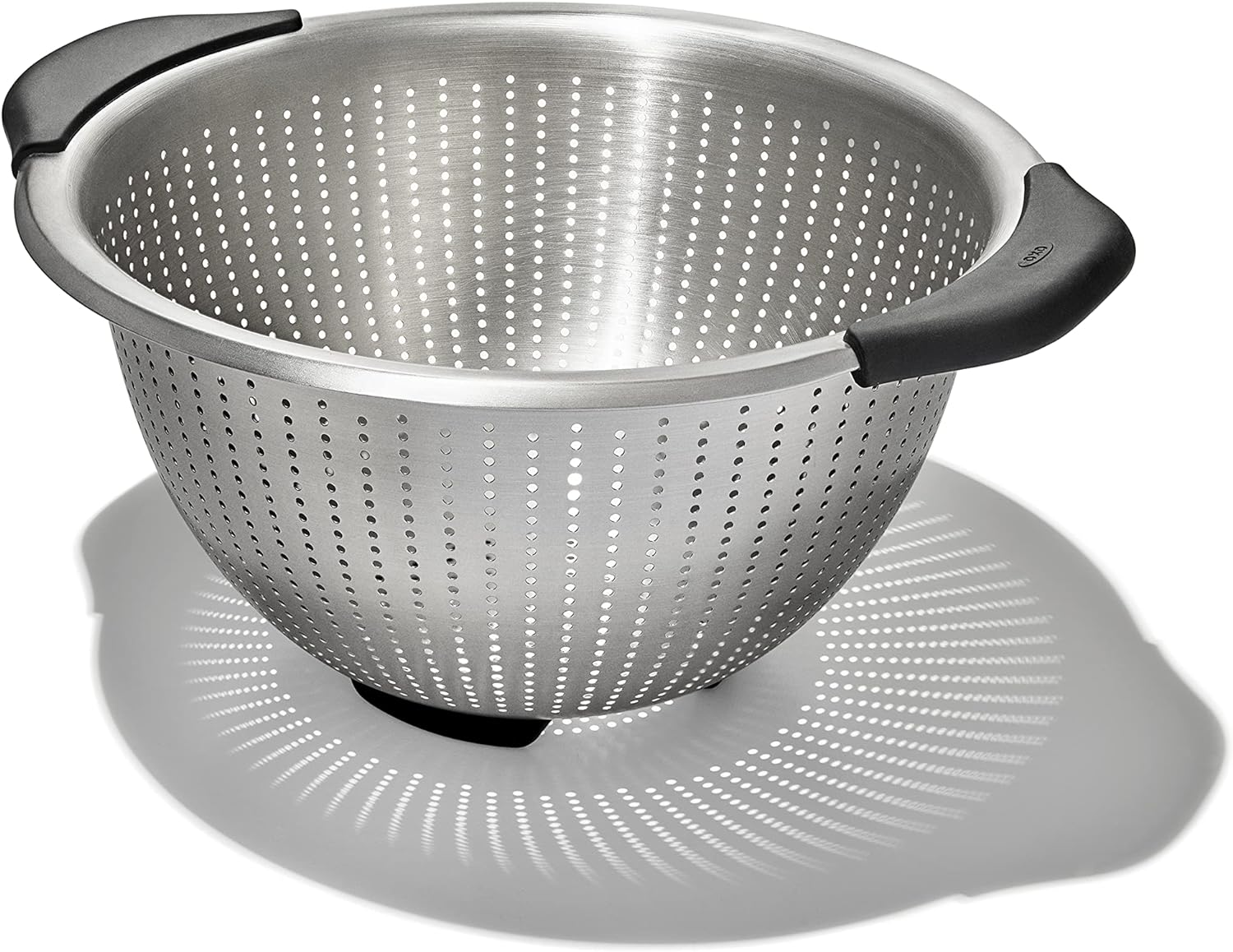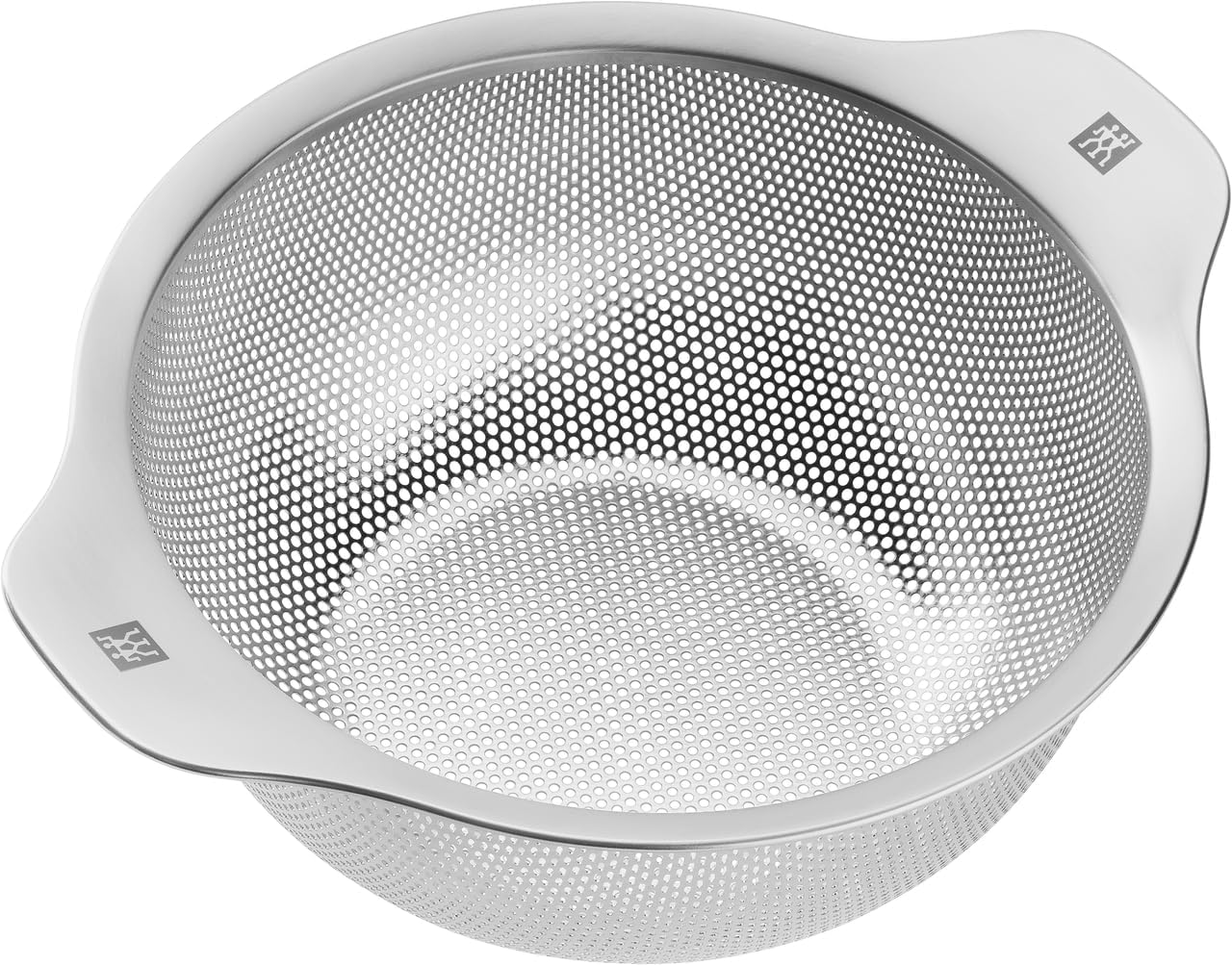Strainers + Sieves + More
Reviews and Recommendations (2024)
What's the difference between strainers and sieves? colanders?
**Strainers / Colanders**
- Use – Separating liquids from solids, rinsing fruits and vegetables.
- Design – Typically has larger holes or openings, allowing liquids to pass through while holding back larger solids.
- Common Tasks – Draining pasta, washing produce, straining broth.
**Filters**
- Use – Fine filtration, often used in coffee makers or for straining liquids to remove very fine particles.
- Materials – Can be made of paper, cloth, or metal, depending on the specific application.
- Common Tasks – Filtering coffee grounds, straining stocks for a clearer liquid.
**Sieves**
- Use – Sifting dry ingredients like flour or sugar, straining liquids.
- Design – Has meshed or perforated surfaces with varying degrees of fineness.
- Common Tasks – Sifting flour, separating seeds from juice, straining sauces.
What’re we really doing here, anyway? It’s a fermentation blog, so we’re mostly gonna be rinsing/cleaning fruit, straining tea, separating solids from liquids while bottling, and probably a few things I’m not remembering at the moment.
For really any rinsing task, I use a colander.
To separate Kombucha from Fruit Solids, I use a finer-grain strainer. I got it on the cheap so I have no idea what size the mesh is, but it’s I do know it’s a double-layer, of fabric, which can be a little more annoying to wash, and a bit less consistent than single-layer.
To wash fruit, colander every time. I’ve got one with a lil stand welded on to the bottom, sits in the sink just fine. Some will stretch across the sink lip, suspended, if you’re into that kinda thing.
Anyway, keep reading if you wanna read my thoughts on strainers and sieves and shit
A sieve isn’t necessarily about showing off a fancy tool in your kitchen. It may also make the work of eliminating seeds, fragments, and other solids from fruit, stocks, and other food less labor-intensive for you. If you rarely make stock and the like from scratch, a chinois sieve may not be worth the investment. Before buying one, ask yourself how often you’re likely to use it. If you doubt you’ll put the device to use more than a few times a year–or not even that much–you’ll probably want to pass.
Basket - Style Strainers and Sieves
When You Gotta Strain the Strange
I tend to be rough on my kitchen equipment. I’ve broken probably 7 or 8 strainers and sieves over the past couple years — so I’ve developed a set of criteria:
- How is the handle attached? Too many of these are just tack-welded on, begging to crack with anything more than moderate force over time. This is unfortunately the case with the Cuisinart ones, and half the ones you can find on Amazon.
- How is the mesh part attached to the rim? Will it pull out with hand-washing or whatever?
- How sturdy is the rim itself? Some end up failing, separating from each other. Others end up with a lil gap where food can get stuck. Boo.
- Is it actually stainless? Many cheaper options overpromise on the actual metal content, leading to rusting issues.
Conical-Style Strainers and Sieves
"definitely not racist"
- A chinois (pronounced shin-wah) is sometimes used with a wooden pestle which is pressed into the food, working it through the mesh of the chinois. The object is similar to a china cap, which has the same conical shape as a chinois but is made of perforated metal rather than mesh.
- China Cap Strainer – A china cap strainer has a conical basket made of mesh that is perfect for removing seeds from soft foods. A cone-shaped pestle can be pushed into the sieve to move food through the mesh.
- Chinois Strainer – Sometimes confused with a China cap strainer, a chinois strainer has finer mesh that works with purees and sauces when you want a very smooth texture.
- It’s all about the cones.
Colanders!
Bigger Holes, mostly
- Stainless is more durable than not; keep an eye out for counterfeit or cheap knock-offs. Most steels will rust, even some lower-grade ‘stainless’.
- An important characteristic is perforated steel instead of a mesh. Mesh is more effort to clean by hand, especially if material dries caked on, and in larger grain sizes, can’t match the consistency of a perforated sheet.
- Colander? I hardly know her!
- Let’s talk grips and handles. Usually in the culinary world, a rivet is viewed as more durable than a weld, but this isn’t necessarily the case. Most of these welds are inexpensive, automated, tack welds that won’t hold up to repeated stress. However, a completed weld with no gaps or stress risers will be both more durable and cleaner than even a good rivet.
- Oxo’s silicone grip is especially nice when you’re working with hot foods near the full capacity of the colander. Think: steaming boiled potatoes. The silicone will stay much cooler than bare steel or aluminum.











